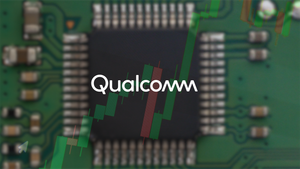
Charlotte, NC – October 24, 2025 – Bank of America Corporation (NYSE: BAC) has once again affirmed its commitment to shareholder returns and signaled continued stability within the broader banking sector with the declaration of its regular quarterly cash dividend of $0.28 per share on common stock. This consistent payout underscores the financial giant's robust health, prudent capital management, and confidence in its future profitability, providing a significant anchor for diversified income portfolios in a dynamic market environment.
The announcement, coming from one of the nation's largest financial institutions, resonates beyond its immediate shareholders. It serves as a bellwether for the resilience and operational strength permeating the banking industry, particularly as the global economy navigates various headwinds and opportunities. For investors, especially those prioritizing stable income streams, Bank of America's reliable dividend is a testament to the enduring value and reliability that established financial institutions can offer.
A Closer Look at Bank of America's Dividend Declaration
Bank of America's Board of Directors officially declared the $0.28 per share quarterly cash dividend on common stock on October 23, 2025. This dividend is slated to be paid on December 26, 2025, to shareholders of record as of December 5, 2025. The ex-dividend date is also anticipated around December 5, 2025, making this the critical date for investors to hold shares to be eligible for the payout. This latest declaration follows an 8% increase from the prior quarter's dividend, highlighting a proactive and growth-oriented approach to shareholder remuneration.
The consistent declaration of this dividend, coupled with the recent increase, is a strong indicator of Bank of America's (NYSE: BAC) sound financial footing and effective capital allocation strategies. The company's official statements accompanying the declaration emphasized its robust financial health and ongoing efforts to return capital to investors, a crucial aspect for maintaining investor confidence. Additionally, the declaration included a regular quarterly cash dividend of $1.75 per share on its 7% Cumulative Redeemable Preferred Stock, Series B, payable on January 23, 2026, to shareholders of record as of January 9, 2026, further demonstrating a comprehensive approach to managing shareholder returns across different equity classes.
Initial market reactions to such dividend announcements in the banking sector are typically positive. A steady or increased dividend payout is widely interpreted as a strong signal of a bank's financial soundness, stability, and management's confidence in future profitability and robust capital position. Historical data suggests that such positive announcements often lead to an increase in share prices, with investors viewing consistent dividends as a revelation of a firm's strong financial position, thereby boosting market value and reinforcing investor confidence.
Impact on Stakeholders: Winners and Market Implications
The primary beneficiaries of Bank of America's (NYSE: BAC) consistent dividend declaration are undoubtedly its common shareholders. For individuals and institutional investors alike, this $0.28 per share payout provides a predictable income stream, which is particularly attractive in the current economic climate where yield can be scarce. This reliability makes BAC a cornerstone for income-focused portfolios, including those managed by pension funds, endowments, and individual retirees seeking steady returns. The dividend acts as a tangible reward for holding the stock, enhancing total shareholder return alongside any capital appreciation.
Beyond direct shareholders, Bank of America (NYSE: BAC) itself stands as a significant winner. A consistent and growing dividend policy enhances the company's appeal to a broader base of investors, particularly those who prioritize stability and income. This can lead to a more stable shareholder base and potentially lower the cost of equity, as investors perceive the company as less risky. The ability to maintain and even increase dividends signals strong underlying profitability, effective risk management, and sufficient capital reserves, all of which contribute to a positive market perception and a premium valuation compared to less consistent peers.
While not necessarily creating "losers" in the traditional sense, the sustained dividend performance of a banking giant like Bank of America (NYSE: BAC) can subtly pressure competitors. Other financial institutions may feel compelled to review their own dividend policies to remain competitive in attracting and retaining income-oriented investors. This could lead to a sector-wide focus on capital efficiency and shareholder returns, ultimately benefiting investors across the banking industry, but potentially challenging institutions with weaker balance sheets or less consistent earnings.
Broader Significance and Industry Trends
Bank of America's (NYSE: BAC) consistent dividend declaration is more than just a corporate announcement; it's a significant indicator of broader industry trends within the financial sector. This move underscores the continued stability and profitability that large commercial banks have achieved, particularly in the years following the 2008 financial crisis. Stringent regulatory reforms, improved capital requirements, and enhanced risk management practices have collectively fortified the banking sector, allowing institutions like Bank of America to consistently return capital to shareholders while maintaining robust balance sheets.
This event fits into a wider narrative of banks moving from a period of capital rebuilding to one of sustained capital deployment and shareholder remuneration. Post-crisis, many banks were forced to cut or suspend dividends to conserve capital. The current environment, marked by regular and even increasing dividends, signifies a mature and resilient phase for the industry. This stability has ripple effects, bolstering confidence not only in direct competitors like JPMorgan Chase (NYSE: JPM) and Wells Fargo (NYSE: WFC), who also maintain strong dividend policies, but also across the entire financial ecosystem, including regional banks and financial services providers.
From a regulatory standpoint, Bank of America's ability to declare such a dividend implies that it has successfully navigated stress tests and maintains capital levels well above regulatory minimums. This is a crucial aspect, as regulators closely scrutinize banks' capital plans before approving dividend increases or significant share buybacks. The consistent dividend therefore serves as an indirect affirmation of the effectiveness of current banking regulations in fostering a stable and well-capitalized financial system. Historically, periods of strong bank dividends have coincided with economic expansion and lower systemic risk, drawing a stark contrast to the dividend cuts seen during economic downturns, further cementing the current declaration's positive implications.
What Comes Next: Navigating Future Opportunities
In the short term, Bank of America's (NYSE: BAC) robust dividend declaration is likely to reinforce positive investor sentiment towards the company and the broader banking sector. Income-seeking investors will continue to view BAC as an attractive option, potentially leading to sustained demand for its shares. This stability can also contribute to a generally more confident market, as the health of major financial institutions is often seen as a proxy for the overall economic outlook. Analysts will be closely watching for any further statements from the company regarding its capital allocation strategy, particularly in light of potential future interest rate changes or economic shifts.
Looking further ahead, the long-term implications for Bank of America (NYSE: BAC) involve a continued focus on balancing shareholder returns with strategic investments for growth. The consistent dividend policy allows the company to attract and retain long-term investors, providing a stable foundation for its stock performance. Potential strategic pivots or adaptations may include further optimization of its digital banking platforms, expansion into new markets, or strategic acquisitions, all while maintaining its commitment to a sustainable dividend. The market opportunities that may emerge include increased investor appetite for well-capitalized financial stocks and a potential re-evaluation of the banking sector's role in diversified portfolios, moving beyond growth-only narratives to include reliable income generation.
Potential scenarios for future outcomes include gradual, consistent increases in the dividend per share, reflecting continued earnings growth and capital strength. However, investors should also consider potential economic headwinds, such as a significant downturn or unexpected regulatory changes, which could impact future dividend growth. Nevertheless, Bank of America's current position suggests a proactive approach to capital management, aiming for both shareholder returns and resilience against future uncertainties, positioning it as a potentially strong long-term holding for investors prioritizing both growth and income.
Comprehensive Wrap-Up: Stability in a Dynamic Market
Bank of America's (NYSE: BAC) declaration of a regular quarterly cash dividend of $0.28 per share on common stock is a powerful signal of stability, profitability, and prudent capital management within one of the world's largest financial institutions. This event not only rewards its shareholders with a consistent income stream but also serves as a critical indicator of the broader health and resilience of the banking sector. It underscores a period where financial institutions, fortified by regulatory reforms and robust balance sheets, are confidently returning capital to investors.
Moving forward, the market will likely continue to view Bank of America (NYSE: BAC) as a bellwether for the financial industry. Its consistent dividend policy reinforces investor confidence, making it an attractive component for diversified income portfolios. The implications extend beyond BAC itself, setting a benchmark for other financial players and contributing to a generally positive outlook for the sector. Investors should watch for continued earnings growth, further announcements regarding capital allocation, and any shifts in the economic landscape that could influence future dividend policies.
In conclusion, Bank of America's latest dividend declaration is more than just a routine financial event; it's a testament to the enduring strength of established financial institutions in providing reliable returns. It highlights a mature and stable banking sector capable of weathering economic fluctuations while consistently delivering value to its shareholders. This sustained commitment to shareholder returns positions Bank of America (NYSE: BAC) as a foundational element in a well-rounded investment strategy, particularly for those seeking both growth and dependable income.
This content is intended for informational purposes only and is not financial advice







